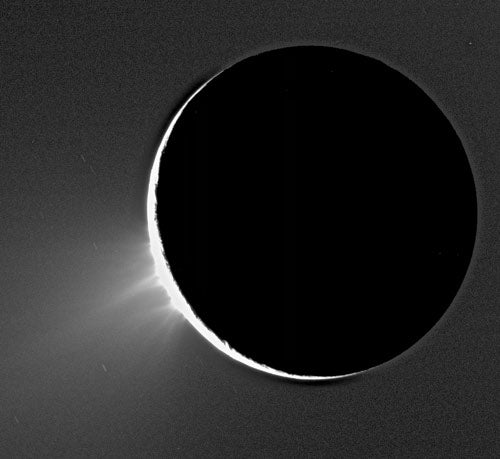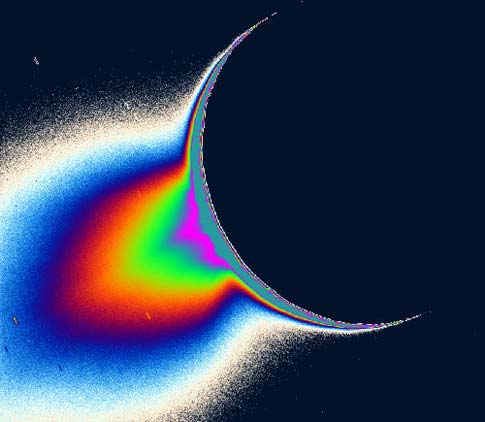Planetary scientists discovered several months ago that Enceladus — Saturn’s sixth-largest moon — is surprisingly dynamic. Relatively warm surface areas lie under an atmosphere composed largely of water vapor. Above that, a region of powder-size ice particles extends at least 250 miles (400 kilometers) high.
Yet despite the incontrovertible evidence for this activity from several instruments aboard the Cassini spacecraft, the probe’s camera had not captured a clear view of material coming from the surface. That changed in late November, when Cassini flew behind Enceladus and looked back at the moon’s crescent disk. The images it captured reveal several icy plumes towering above the moon’s south pole.
The location of these fountain-like sources comes as no surprise. Cassini’s camera had already revealed the south pole as the moon’s youngest, most fractured region. The most intriguing landscape contains several long, roughly parallel cracks — dubbed “tiger stripes” by the imaging team — stretching about 80 miles (130 km) and spaced 25 miles (40 km) apart.
Viewing Enceladus at a crescent phase revealed greater detail above the moon’s limb, because Cassini could see the plume of small, icy particles backlit by the Sun. The spray of particles extends at least 60 miles (100 km) above the surface but likely reaches 3 or 4 times higher. Most of the particles eventually escape the moon’s weak gravity and likely contribute to Saturn’s tenuous E ring.
Cassini took images of several other icy saturnian moons under similar lighting and viewing geometries. Those images show nothing akin to Enceladus’ plumes, which proves they are not a camera artifact.
Scientists don’t yet know how the plumes form. One suggestion is that water vapor escapes from the warm ice exposed in surface cracks at the south pole. Another idea holds that, beneath the moon’s surface, the temperature is hot enough for the water to be liquid. Then, under pressure, the water erupts from the surface and freezes almost instantly — a frigid geyser in an alien Yellowstone Park.











